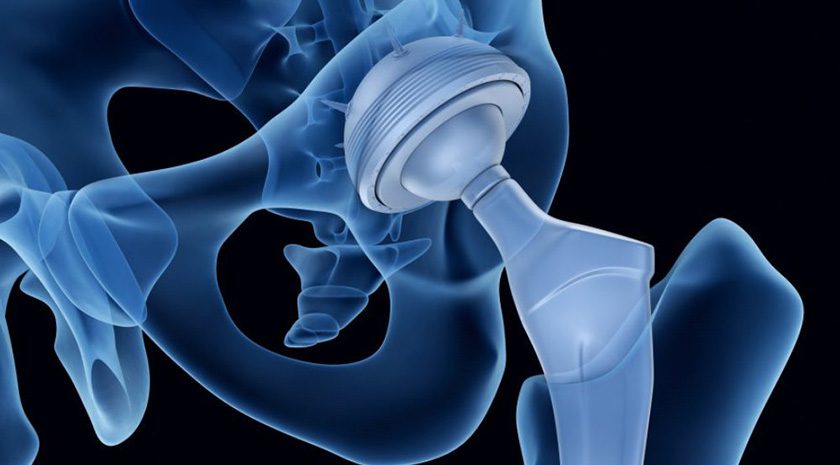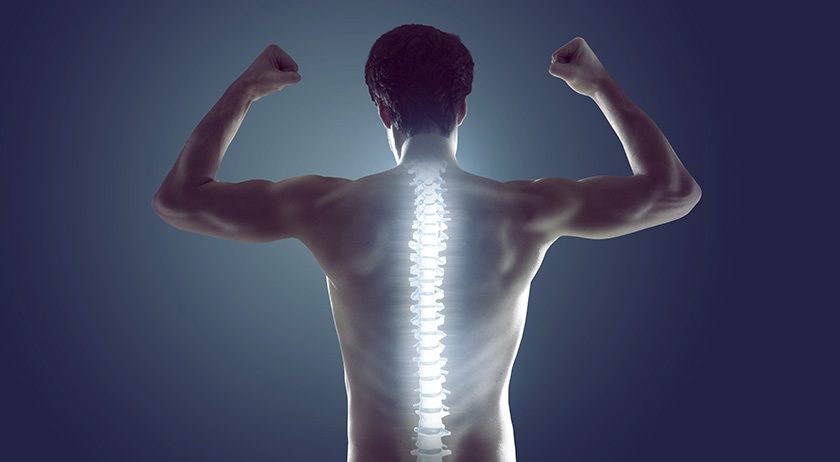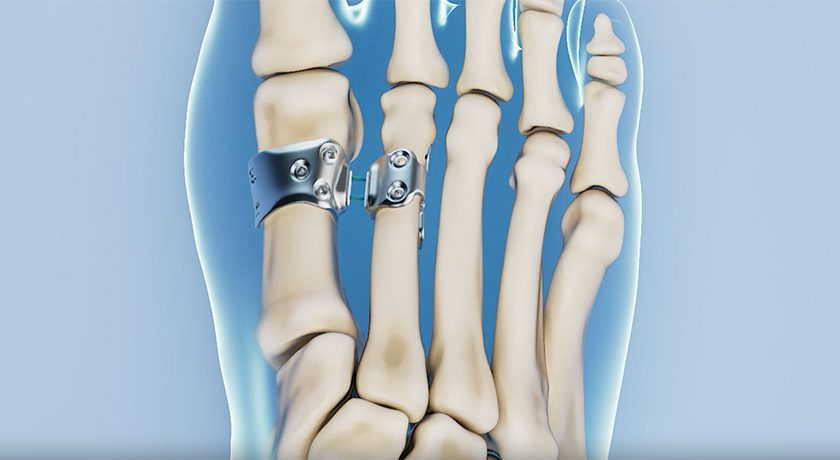
 Copy to clipboard
Copy to clipboard 
ORTHOWORLD estimates Stryker’s 3Q17 orthopaedic revenue at US $1,622.4MM, +3.6% from 3Q16, and YTD revenue of $4,853.3MM, +4.5% vs. the prior year. Estimated segment sales and growth follow.
| 3Q17 | 3Q16 | $ Change | % Change | |
| Joint Reconstruction | $857.1 | $829.1 | $28.0 | 3.4% |
| Knee | $474.8 | $453.7 | $21.1 | 4.6% |
| Hip | $354.1 | $348.7 | $5.4 | 1.5% |
| Extremities | $28.3 | $26.6 | $1.6 | 6.1% |
| Trauma | $342.0 | $318.2 | $23.8 | 7.5% |
| Arthroscopy/Soft Tissue | $122.5 | $115.5 | $7.0 | 6.1% |
| Spine | $174.4 | $181.8 | -$7.4 | -4.1% |
| Orthobiologics | $53.1 | $51.1 | $2.1 | 4.0% |
| Other* | $73.3 | $70.0 | $3.3 | 4.7% |
| Total | $1,622.4 | $1,565.7 | $56.7 | 3.6% |
| 9Mo17 | 9Mo16 | $ Change | % Change | |
| Joint Reconstruction | $2,595.5 | $2,492.5 | $103.0 | 4.1% |
| Knee | $1,445.8 | $1,361.5 | $84.3 | 6.2% |
| Hip | $1,065.0 | $1,051.8 | $13.2 | 1.3% |
| Extremities | $84.7 | $78.5 | $6.2 | 7.9% |
| Trauma | $997.8 | $925.5 | $72.4 | 7.8% |
| Arthroscopy/Soft Tissue | $363.2 | $338.5 | $24.7 | 7.3% |
| Spine | $520.1 | $528.6 | -$8.5 | -1.6% |
| Orthobiologics | $159.5 | $151.8 | $7.7 | 5.1% |
| Other* | $217.2 | $207.4 | $9.8 | 4.7% |
| Total | $4,853.3 | $4,643.6 | $209.7 | 4.5% |
*Includes CMF, Performance Solutions
Over the course of the first nine months of 2017, Stryker’s overall orthopaedic revenue growth has decreased sequentially—from mid-single-digits in 1Q down to lower-single-digits in 3Q17. Its segments of highest growth have remained the same, year to date: Joint Recon Extremities, Trauma and Arthroscopy/Soft Tissue Repair, all posting mid-single-digit growth or more.
Of companies with exposure to weather-challenged geographies, Stryker noted minimal disruption to its product supply; they don’t expect a material financial impact, going forward. Their Puerto Rico facility makes products for endoscopy and instruments divisions, and Houston and Florida storms contributed to canceled surgical procedures and delays in capital purchases—but again, no meaningful impact expected for the rest of the year.
U.S. growth drivers included strong demand for 3D-printed products, foot/ankle and shoulder products, the Triathlon knee and Mako surgical robotics. Additional growth came from the System 8 power tool offering, the 1588 video platform and sports medicine implants.
Mako has a “halo effect” on knee revenue, as leadership noted that U.S. total knee portfolio sales grew four times faster in accounts with a Mako system.
Mako update:
- The number of robot installations continues to grow sequentially with each quarter in 2017. During 3Q, SYK sold 33 robots (23 in the U.S.), with 40% of those selling in competitive accounts.
- To date, of 385 robots in the U.S., 50% are now updated to use the total knee application
- 600 surgeons are now trained on total knee, for a total of 9,400 since launch (increase from 400 and 5,000, respectively, in 2Q17)
- Overall, robot utilization rates continue to grow, +50% vs. 3Q16
- In 3Q, SYK received FDA 510(k) clearance for use of cementless products with Mako total knee; about 20% of all total knees now use cementless implants
SYK’s use of additive manufacturing technology now applies to hips, with a 3D-printed acetabular cup in limited launch—full launch is slated for mid-2018. Surgeon feedback is positive.
Spine continues to struggle—chiefly, U.S. spine across many product lines, though offset somewhat by high demand for 3D-printed Tritanium. Interventional Spine products were noted as putting up good growth, but no big recovery is expected for traditional spine products in the near term.
Within 3Q, SYK received FDA clearance for the Serrato pedicle screw and Tritanium C Anterior Cervical Cage, both of which launched after the quarter’s close, at NASS, which is also where the company announced its purchase of Vexim, developer of the SpineJack expandable vertebral compression fracture implant.
Vexim’s portfolio complements Stryker’s Interventional Spine division, which addresses vertebral augmentation, vertebroplasty and radiofrequency ablation procedures as well as diagnostic decompression tools for contained disc herniation. Stryker will gain access to Vexim’s direct salesforce in France, Germany, Spain and Italy, and an international distribution network in Eastern Europe, the Middle East, Latin America and Asia. Vexim will file for FDA 510(k) clearance of SpineJack in 2018, for marketing in the U.S. The device may overtake Stryker’s AVAflex vertebral augmentation product, acquired from BD (Becton Dickinson) in 2Q16.
Sources: Stryker Corp.; ORTHOWORLD estimates
ORTHOWORLD estimates Stryker’s 3Q17 orthopaedic revenue at US $1,622.4MM, +3.6% from 3Q16, and YTD revenue of $4,853.3MM, +4.5% vs. the prior year. Estimated segment sales and growth follow.
Q17
Q16
$ Change
% Change
Joint...
ORTHOWORLD estimates Stryker’s 3Q17 orthopaedic revenue at US $1,622.4MM, +3.6% from 3Q16, and YTD revenue of $4,853.3MM, +4.5% vs. the prior year. Estimated segment sales and growth follow.
| 3Q17 | 3Q16 | $ Change | % Change | |
| Joint Reconstruction | $857.1 | $829.1 | $28.0 | 3.4% |
| Knee | $474.8 | $453.7 | $21.1 | 4.6% |
| Hip | $354.1 | $348.7 | $5.4 | 1.5% |
| Extremities | $28.3 | $26.6 | $1.6 | 6.1% |
| Trauma | $342.0 | $318.2 | $23.8 | 7.5% |
| Arthroscopy/Soft Tissue | $122.5 | $115.5 | $7.0 | 6.1% |
| Spine | $174.4 | $181.8 | -$7.4 | -4.1% |
| Orthobiologics | $53.1 | $51.1 | $2.1 | 4.0% |
| Other* | $73.3 | $70.0 | $3.3 | 4.7% |
| Total | $1,622.4 | $1,565.7 | $56.7 | 3.6% |
| 9Mo17 | 9Mo16 | $ Change | % Change | |
| Joint Reconstruction | $2,595.5 | $2,492.5 | $103.0 | 4.1% |
| Knee | $1,445.8 | $1,361.5 | $84.3 | 6.2% |
| Hip | $1,065.0 | $1,051.8 | $13.2 | 1.3% |
| Extremities | $84.7 | $78.5 | $6.2 | 7.9% |
| Trauma | $997.8 | $925.5 | $72.4 | 7.8% |
| Arthroscopy/Soft Tissue | $363.2 | $338.5 | $24.7 | 7.3% |
| Spine | $520.1 | $528.6 | -$8.5 | -1.6% |
| Orthobiologics | $159.5 | $151.8 | $7.7 | 5.1% |
| Other* | $217.2 | $207.4 | $9.8 | 4.7% |
| Total | $4,853.3 | $4,643.6 | $209.7 | 4.5% |
*Includes CMF, Performance Solutions
Over the course of the first nine months of 2017, Stryker’s overall orthopaedic revenue growth has decreased sequentially—from mid-single-digits in 1Q down to lower-single-digits in 3Q17. Its segments of highest growth have remained the same, year to date: Joint Recon Extremities, Trauma and Arthroscopy/Soft Tissue Repair, all posting mid-single-digit growth or more.
Of companies with exposure to weather-challenged geographies, Stryker noted minimal disruption to its product supply; they don’t expect a material financial impact, going forward. Their Puerto Rico facility makes products for endoscopy and instruments divisions, and Houston and Florida storms contributed to canceled surgical procedures and delays in capital purchases—but again, no meaningful impact expected for the rest of the year.
U.S. growth drivers included strong demand for 3D-printed products, foot/ankle and shoulder products, the Triathlon knee and Mako surgical robotics. Additional growth came from the System 8 power tool offering, the 1588 video platform and sports medicine implants.
Mako has a “halo effect” on knee revenue, as leadership noted that U.S. total knee portfolio sales grew four times faster in accounts with a Mako system.
Mako update:
- The number of robot installations continues to grow sequentially with each quarter in 2017. During 3Q, SYK sold 33 robots (23 in the U.S.), with 40% of those selling in competitive accounts.
- To date, of 385 robots in the U.S., 50% are now updated to use the total knee application
- 600 surgeons are now trained on total knee, for a total of 9,400 since launch (increase from 400 and 5,000, respectively, in 2Q17)
- Overall, robot utilization rates continue to grow, +50% vs. 3Q16
- In 3Q, SYK received FDA 510(k) clearance for use of cementless products with Mako total knee; about 20% of all total knees now use cementless implants
SYK’s use of additive manufacturing technology now applies to hips, with a 3D-printed acetabular cup in limited launch—full launch is slated for mid-2018. Surgeon feedback is positive.
Spine continues to struggle—chiefly, U.S. spine across many product lines, though offset somewhat by high demand for 3D-printed Tritanium. Interventional Spine products were noted as putting up good growth, but no big recovery is expected for traditional spine products in the near term.
Within 3Q, SYK received FDA clearance for the Serrato pedicle screw and Tritanium C Anterior Cervical Cage, both of which launched after the quarter’s close, at NASS, which is also where the company announced its purchase of Vexim, developer of the SpineJack expandable vertebral compression fracture implant.
Vexim’s portfolio complements Stryker’s Interventional Spine division, which addresses vertebral augmentation, vertebroplasty and radiofrequency ablation procedures as well as diagnostic decompression tools for contained disc herniation. Stryker will gain access to Vexim’s direct salesforce in France, Germany, Spain and Italy, and an international distribution network in Eastern Europe, the Middle East, Latin America and Asia. Vexim will file for FDA 510(k) clearance of SpineJack in 2018, for marketing in the U.S. The device may overtake Stryker’s AVAflex vertebral augmentation product, acquired from BD (Becton Dickinson) in 2Q16.
Sources: Stryker Corp.; ORTHOWORLD estimates

You are out of free articles for this month
Subscribe as a Guest for $0 and unlock a total of 5 articles per month.
You are out of five articles for this month
Subscribe as an Executive Member for access to unlimited articles, THE ORTHOPAEDIC INDUSTRY ANNUAL REPORT and more.
JV
Julie Vetalice is ORTHOWORLD's Editorial Assistant. She has covered the orthopedic industry for over 20 years, having joined the company in 1999.







